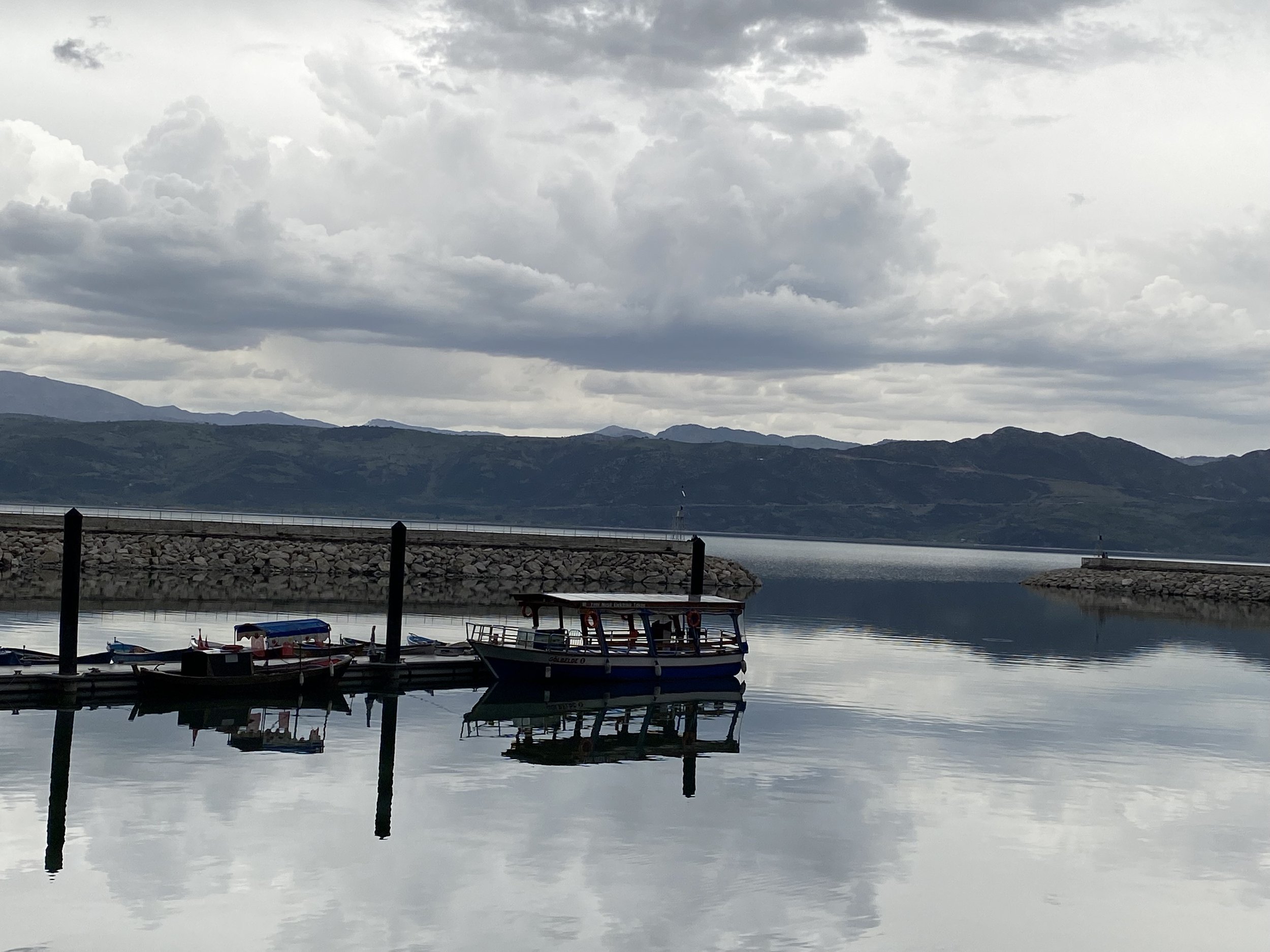Turkey’s Christian Sites: Following the Footsteps of St. Paul Off the Beaten Path
The reconstructed Cleopatra’s Gate welcoming visitors to Paul’s hometown of Tarsus. Cleopatra and Marc Antony were said to have met in Tarsus in 41 BC. (Photo by Kim Lawton)
(TRAVEL) TARSUS, Turkey — The Apostle Paul is arguably one of the most compelling — and most controversial — figures in Christianity.
Just a few years after the death of Jesus, Paul was credited with spreading the new gospel message widely across the first century Greco-Roman world. His influence on the formation and growth of Christianity was profound. Although there are scholarly debates about the authorship of some of the books of the New Testament, as many as half are traditionally attributed to Paul.
Paul, originally known as Saul, was born in Tarsus, in the Roman province of Asia Minor, in what is modern-day Turkey. Much of his missionary travel took place in that part of the world as well. Yet, most people are unaware of the extent to which Paul is linked to what is now Turkey.
“There’s so much Christian history in Turkey, and people just don’t realize it,” said Todd Bolen, professor of biblical studies at The Master’s University in California and founder of BiblePlaces.com, an online resource designed to help people better understand the history, geography and archeology of biblical lands.
Bolen told me he is especially frustrated by tours that purport to follow Paul’s footsteps yet never even set foot in Turkey. “You just add up the number of sites there, and it well surpasses Greece or Italy,” he said.
READ: Turkey’s Christian Sites: Visiting 7 Churches From The Book Of Revelation (religionunplugged.com)
Many tourists coming to Turkey visit Ephesus, the sprawling archeological site where, according to the Book of Acts, Paul lived, worked and preached for nearly three years. Yet, there are numerous other fascinating sites associated with Paul that are more off the beaten path. I visited several of them on a trip organized and paid for by the Turkey Tourism Promotion and Development Agency.
I flew to Istanbul and then caught a local connecting flight to Adana, in southeastern Turkey. Tour guide Damla Arslan met me at the small airport, and we drove to the Mediterranean coastal city of Mersin to stay overnight and meet up with the rest of our group in the morning.
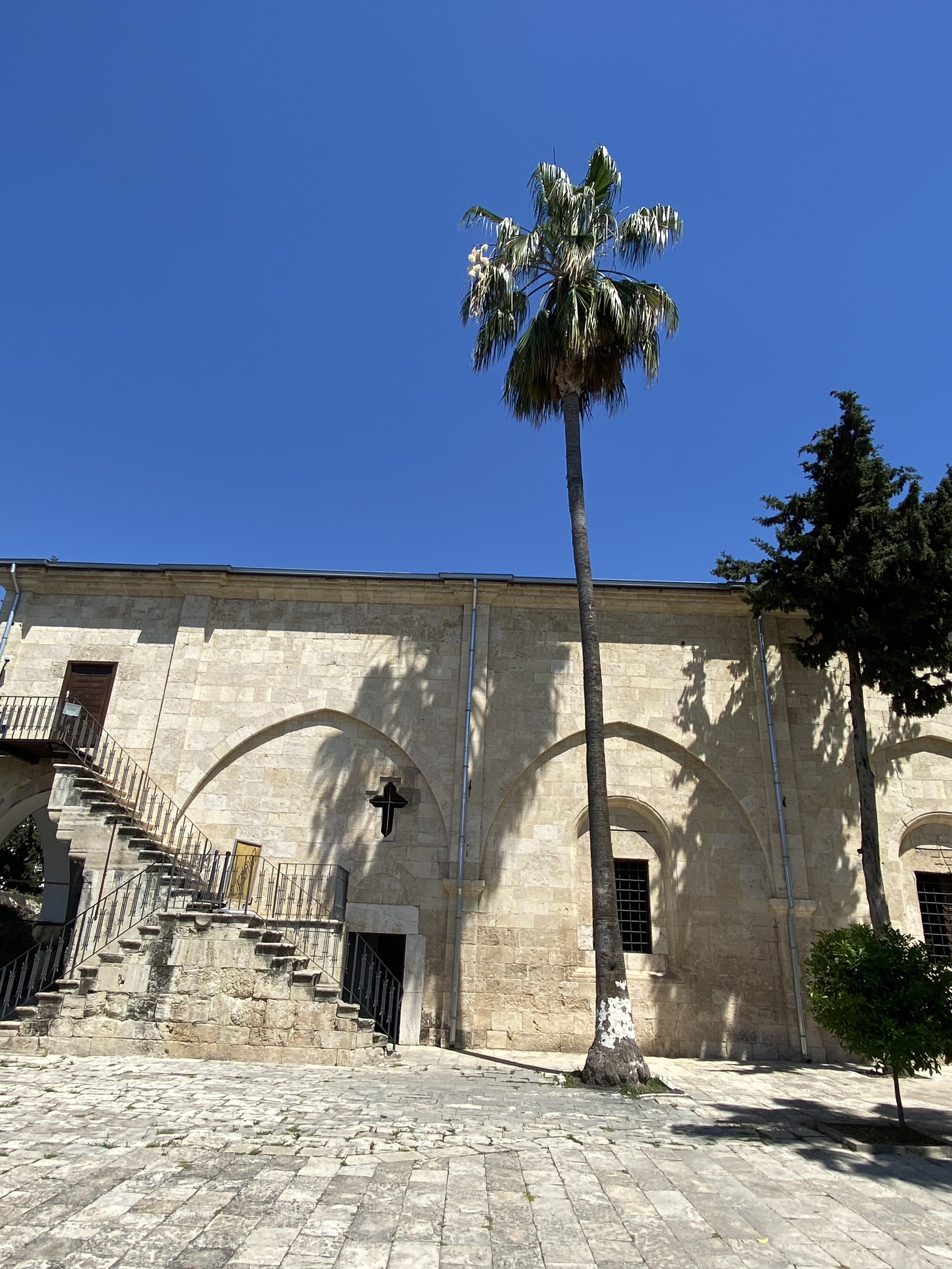
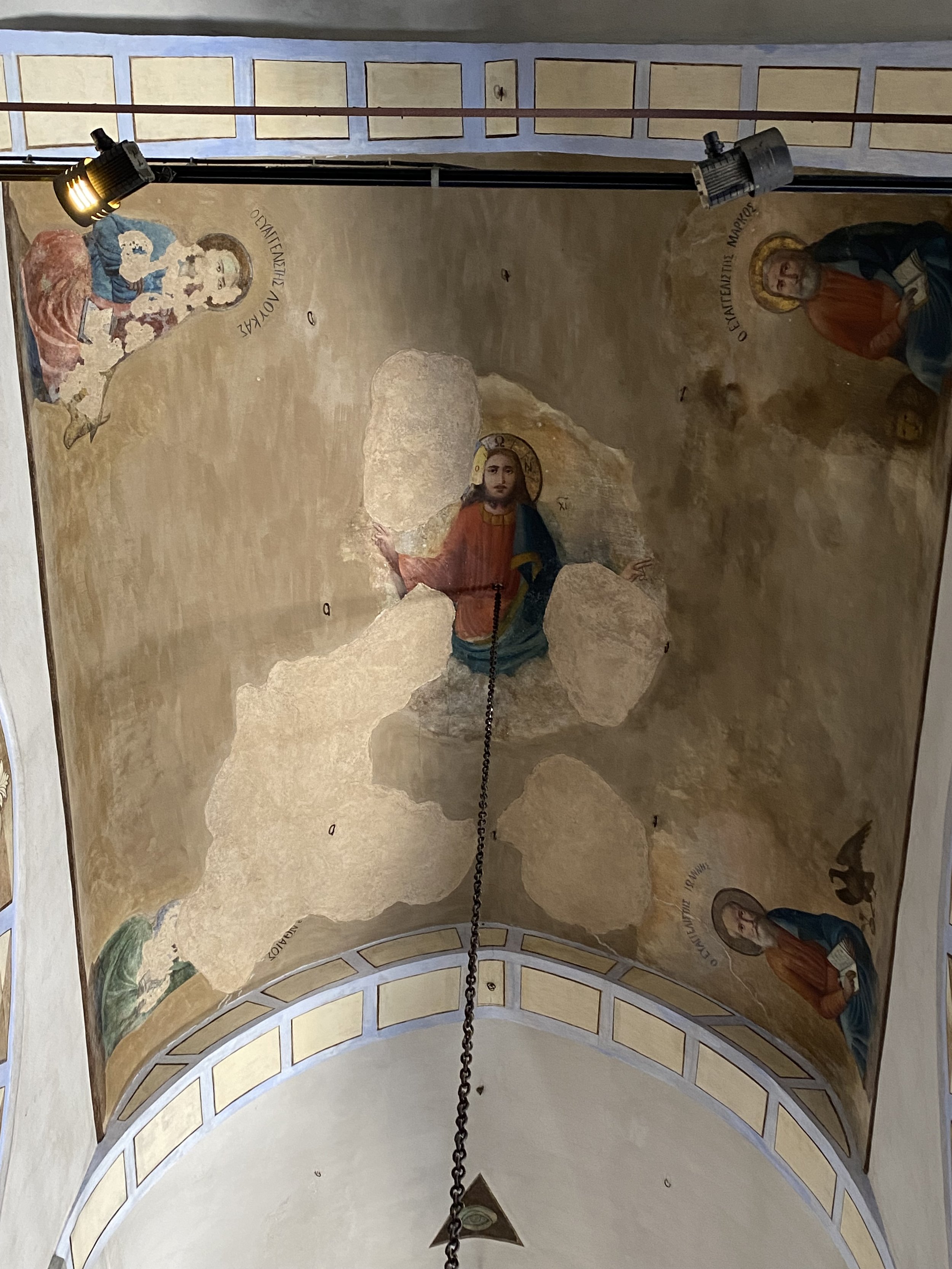

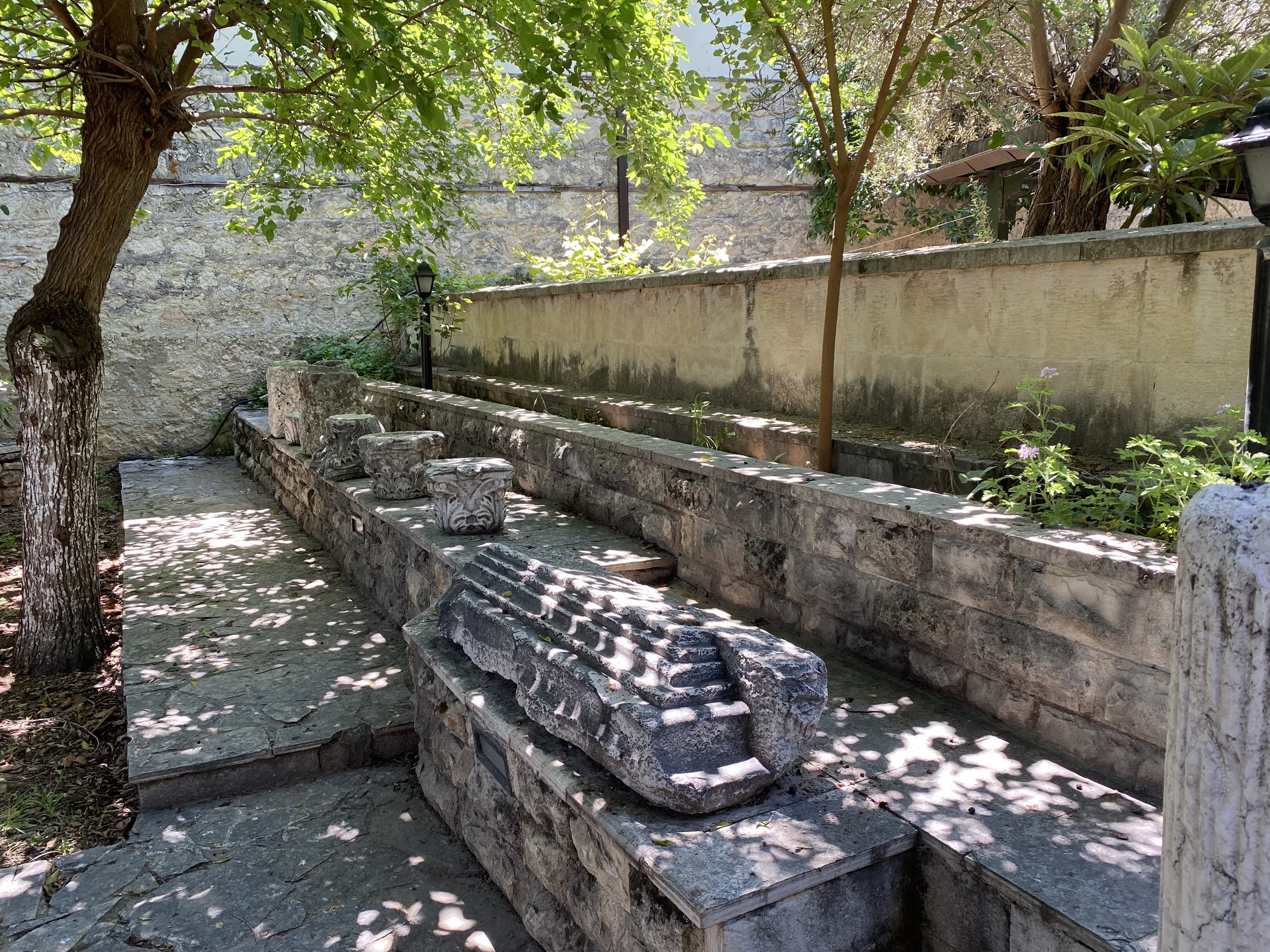

Day 1
Tarsus (Acts 9:11; 9:30; 11:25; 21:39; 22:3)
We drove from Mersin to begin our tour at Paul’s starting point, his birth city of Tarsus. During Paul’s time, Tarsus was an influential Greek-speaking port city on a major east-west trade route.
“It was a city of culture and politics, of philosophy and industry,” wrote prominent Christian theologian N.T. Wright in his book “Paul: A Biography.” Wright noted that one of those industries was a textile business that produced material made from goat’s hair and used in shelters. According to Wright, “This may well have been the basis of the family business, tent-making, in which Saul had been apprenticed and which he continued to practice.”
Arslan, who is an archeologist and an historian, told us that in addition to hosting a thriving Jewish community, Tarsus was “a melting pot of cultures and beliefs.” She suggested that Paul’s early exposure to this diversity may have enabled his later success in preaching across a wide section of the ancient world.
According to the Book of Acts, after Paul’s famous conversion on the road to Damascus, he generated controversy in Jerusalem, so early church leaders sent him back to Tarsus. He stayed there for several years before setting off on his missionary journeys.
There is not a lot from Paul’s time still evident in the bustling modern city of Tarsus. And it’s difficult to excavate under ongoing businesses and homes. At the western entrance of the city, the so-called Cleopatra’s Gate has been preserved and reconstructed. Marc Antony and Cleopatra were said to have met here in 41 B.C. after the Egyptian queen sailed up the river in a barge.
Our first stop was the St. Paul Memorial Museum, a small 19th century church dedicated to Paul. The simple stone interior showcases lovely frescoes on the ceiling. The church may have been built on the site of earlier churches, but Arlsan said as of now, there is little archeological evidence to support this. Services are no longer held regularly here, although some occur on special occasions. A shady garden in the courtyard provides a quiet spot for rest and reflection.
We then drove a short distance to St. Paul’s Well, a still-working water well built a couple of hundred years ago over the site of a first century well. Next to the well are the plexiglass-covered ruins of a first century building that some claim was Paul’s family home and courtyard. Again, Arlsan acknowledged, there is no historical evidence to confirm this.
At first, the well struck me with a “George Washington slept here” skepticism. Yet, for many Christians, this has become an important pilgrimage spot. And indeed, while we were there, some Christian tourists came and reverently drank water from the well, clearly moved by their visit.
From here, we walked a few blocks to an archeological site with ruins of a marketplace and colonnaded Roman street. Although Arslan told us this road was likely built on top of the thoroughfare that Paul and his companions would have used, we still got a good sense of what the area would have looked like in the first century.
With the Muslim call to prayer echoing in the background, we walked to a restaurant across the street and enjoyed Iksender lamb kebabs with yogurt sauce for lunch. Some of my colleagues tried the fermented black carrot juice, a local favorite, but I decided to stick with Turkish tea.
After lunch, we piled back into our minibus and drove more than four hours across the Cilician plain and through the still snow-covered Taurus mountains. The rugged terrain was a vivid demonstration of how difficult first century travel would have been by foot. We arrived at our hotel in Konya well after dark.
The courtyard of the Konya Archeology Museum, in the city known in the Bible as Iconium.
Day 2
Iconium/Konya (Acts 13:51-14:6; 16:2; 2 Timothy 3:11)
Because Konya is one of the oldest continuously inhabited cities in the world, there are few visible first century ruins here as well. We did a brief tour of the Konya Archeology Museum, which displays important sarcophagi and stone inscriptions from the Greco-Roman era, including three stones that mention biblical cities.
Turkey is more than 99% Muslim, and Konya is well known as the burial place of the popular 13th century Sufi poet Rumi. But Iconium, as it used to be called, also played a role in early Christian history. According to Acts, Paul founded a church in this important crossroads city during his first missionary journey, and he visited the local Christians there on his subsequent trips. Scholars believe the Book of Galatians was written to Christians in Iconium and the surrounding area.
According to Acts, during the first missionary journey, Paul and his companion Barnabas spoke to both Jews and Gentiles in Iconium. Their message generated controversy, and they were forced to flee to avoid a plot to stone them.


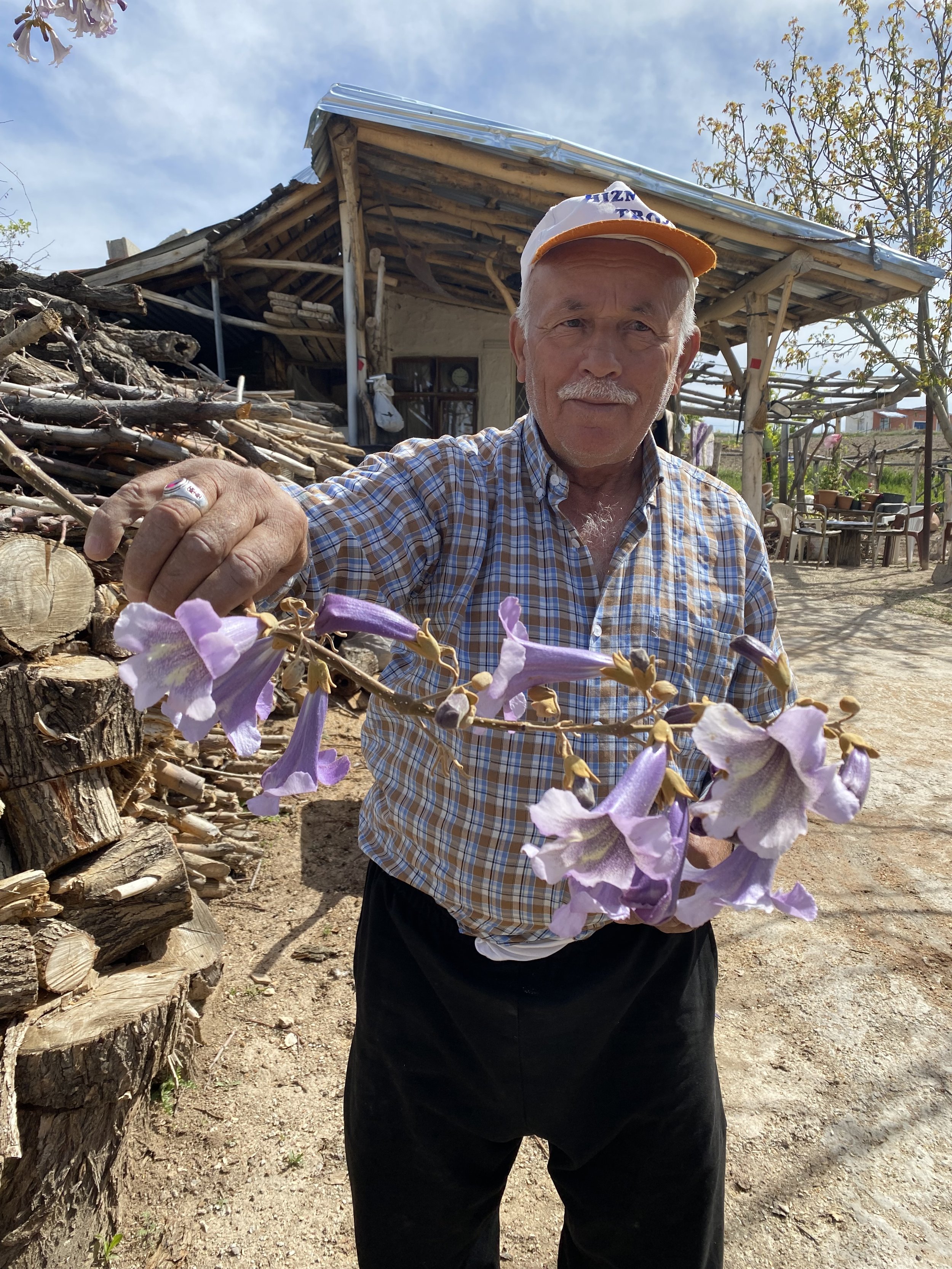
Lystra (Acts 14:6-23; 16:1-5; 2 Timothy 3:11)
From Iconium, the apostles fled to the village of Lystra, about 20 miles away, roughly a days’ walk. Lystra is also described in the New Testament as the hometown of early church leader Timothy, who was mentored by Paul.
We took a couple of wrong turns driving to Lystra, and when we arrived, it was clear why. The site is simply a large unmarked and unexcavated archeological tell or mound in the middle of some fields. An old man and woman were working in the potato field next to the mound. Archeologists know there are layers of history under the grassy mound. Arlsan said the pandemic delayed plans to begin excavations.
There are hundreds of similar mounds across Turkey, and Arlsan said the decisions on which ones to excavate can be complicated. Several factors come into play, including “weighing the possible value of the site versus the impact of excavation on the locals,” she said. There are also considerations about how to preserve and protect the site from looters, as well as gauging possible international interest.
As we headed back to where our minibus was parked, we admired a blooming poplar tree and purple and yellow irises in a farm beside the road. The farmer came out to greet us, and demonstrating traditional Turkish hospitality, he and his wife invited us to sit in chairs in their yard. They drizzled cologne on our hands and offered us Turkish delight candies, biscuits and chocolates.
The Book of Acts tells a dramatic story about how people in Lystra initially thought Paul and Barnabas were the Roman gods Zeus and Hermes because they healed a crippled man. Although Paul set the record straight, he still stirred controversy there and was stoned and left for dead. The next day, he and Barnabas left and headed to Derbe, about a two days’ walk.
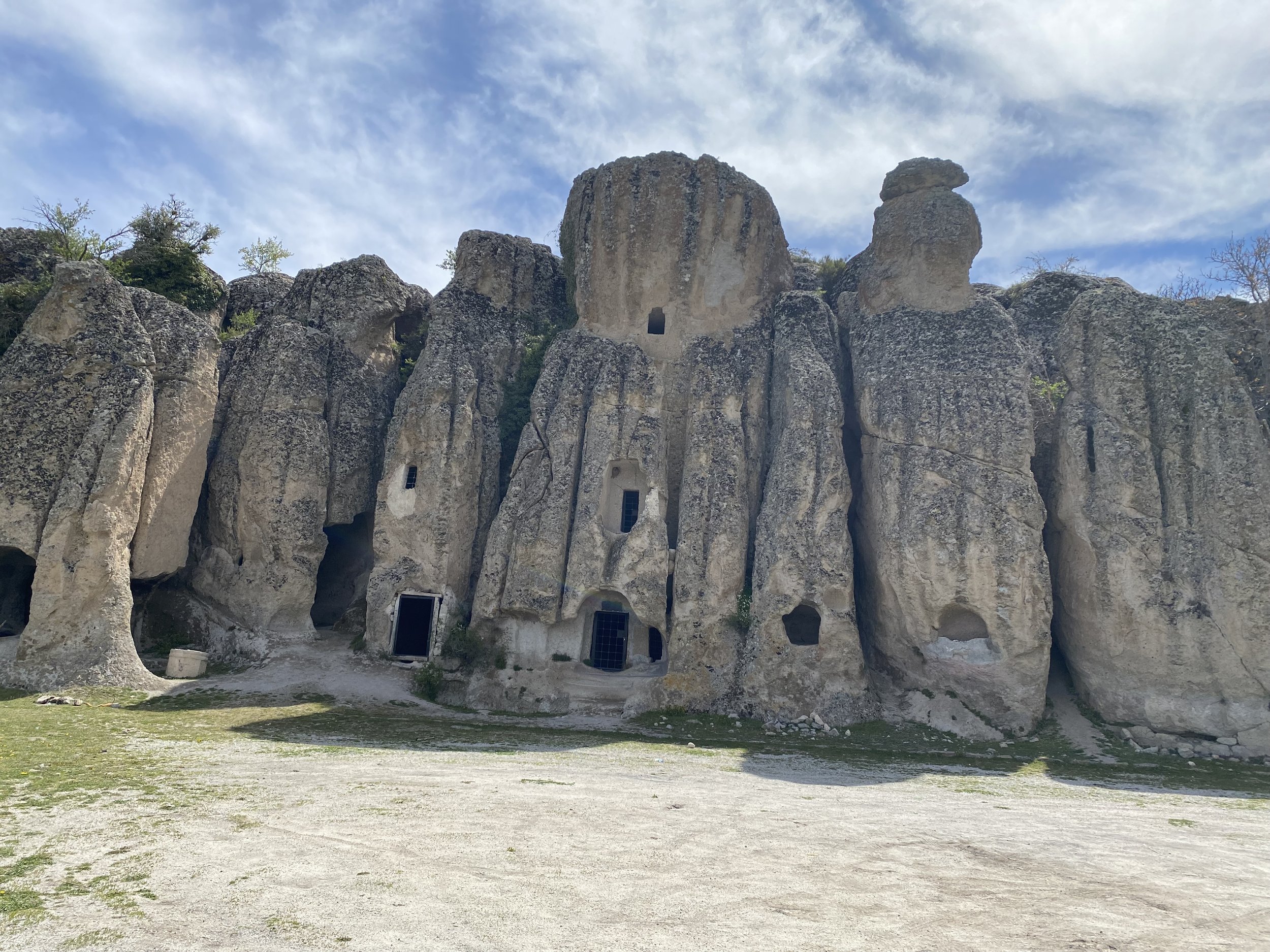

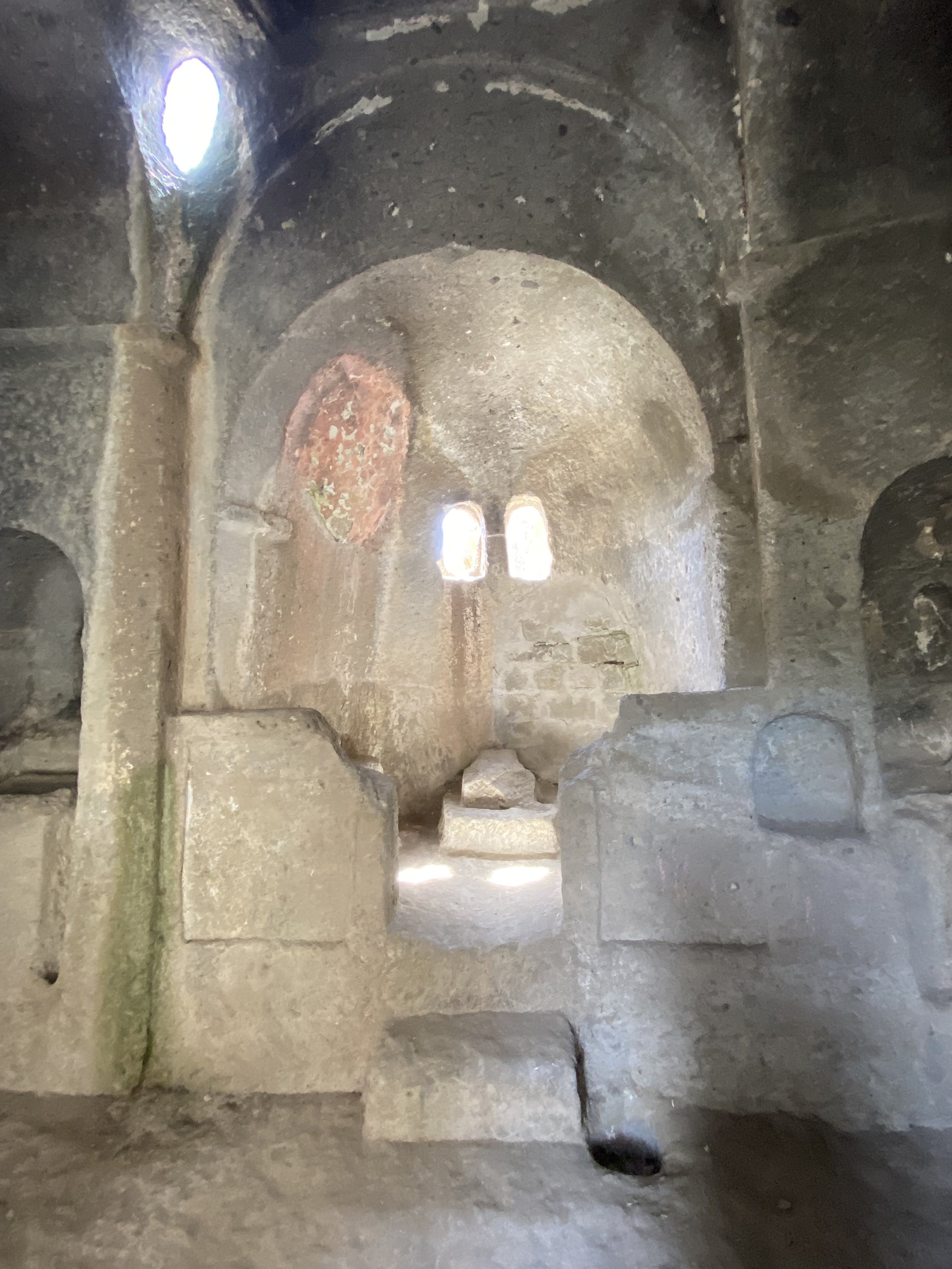
Kilistra
We also headed to Derbe from Lystra, stopping on the way in Kilistra, an ancient site of volcanic rock formations. Kilistra has been called a “mini-Cappadocia.” Like the popular larger tourist stop in central Turkey, Kilistra has churches and chapels carved into the caves. One of the stone chapels has a few deteriorating frescos. Early Christians may have hidden here to avoid persecution.
Kilistra is not mentioned in the New Testament, but locals believe Paul and his companions could have stopped here because of its location along the road from Lystra. It is a beautiful area with stunning views of the nearby mountains.
The archeological tell, or mound, over the biblical town of Derbe.
Derbe (Acts 14:6; 14:20; 16:1; 20:4)
Similar to Lystra, all that is left from ancient Derbe is an archeological mound, although this one has an identifying sign in front of it. Arslan pointed out a small fence on top of the mound, which indicated that some work has been done here. One of the stone inscriptions displayed at the Konya Archeological Museum confirmed that this was the actual site of Derbe.
The New Testament does not say a lot about Derbe, other than Paul’s first missionary trip here resulted in many disciples. He returned on his subsequent journeys as well. Gaius, one of Paul’s traveling companions to Jerusalem, was from Derbe. After a quick visit here to take photos, we headed back to Konya, where we also did a quick tour of Rumi’s tomb.
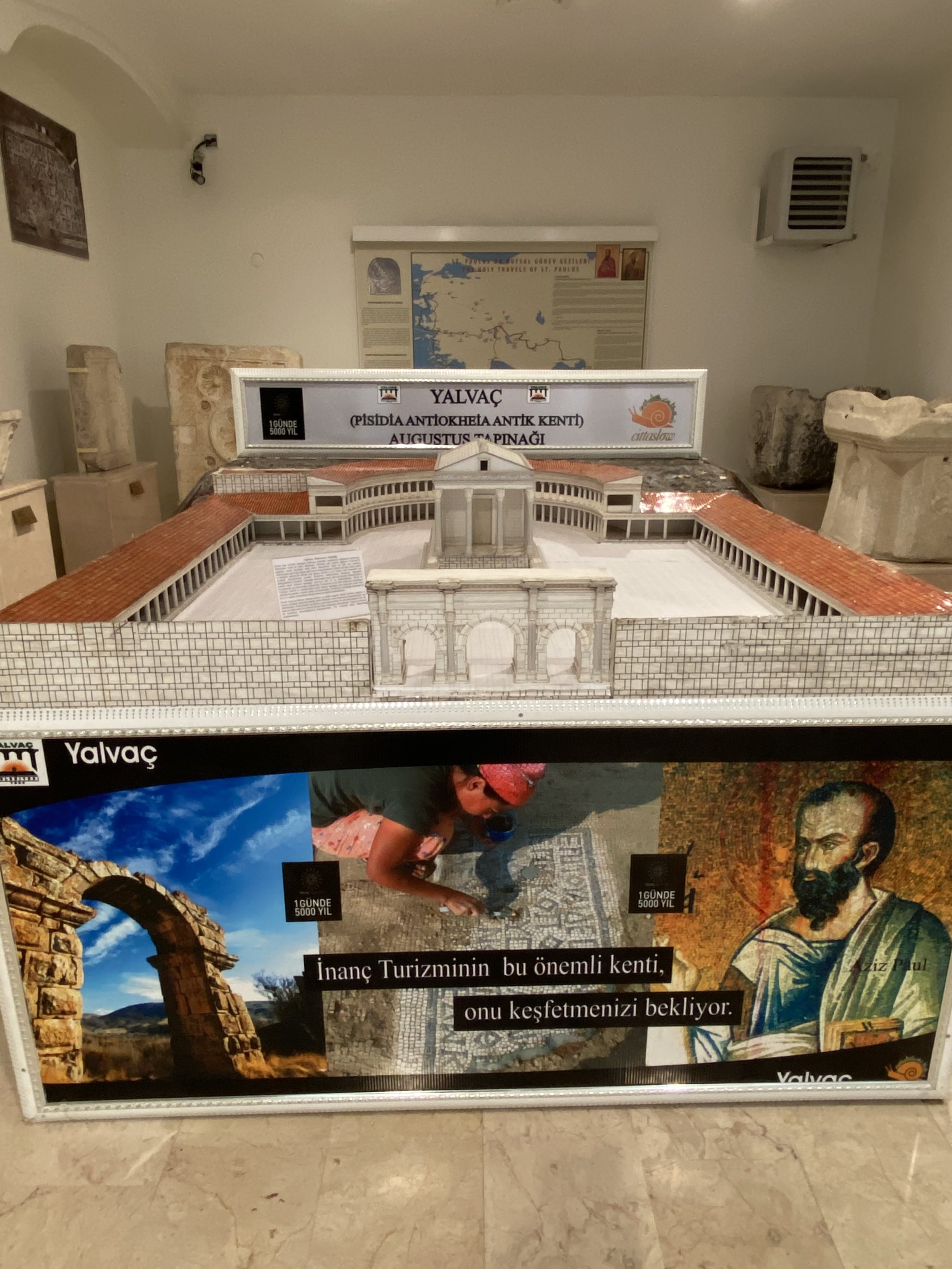
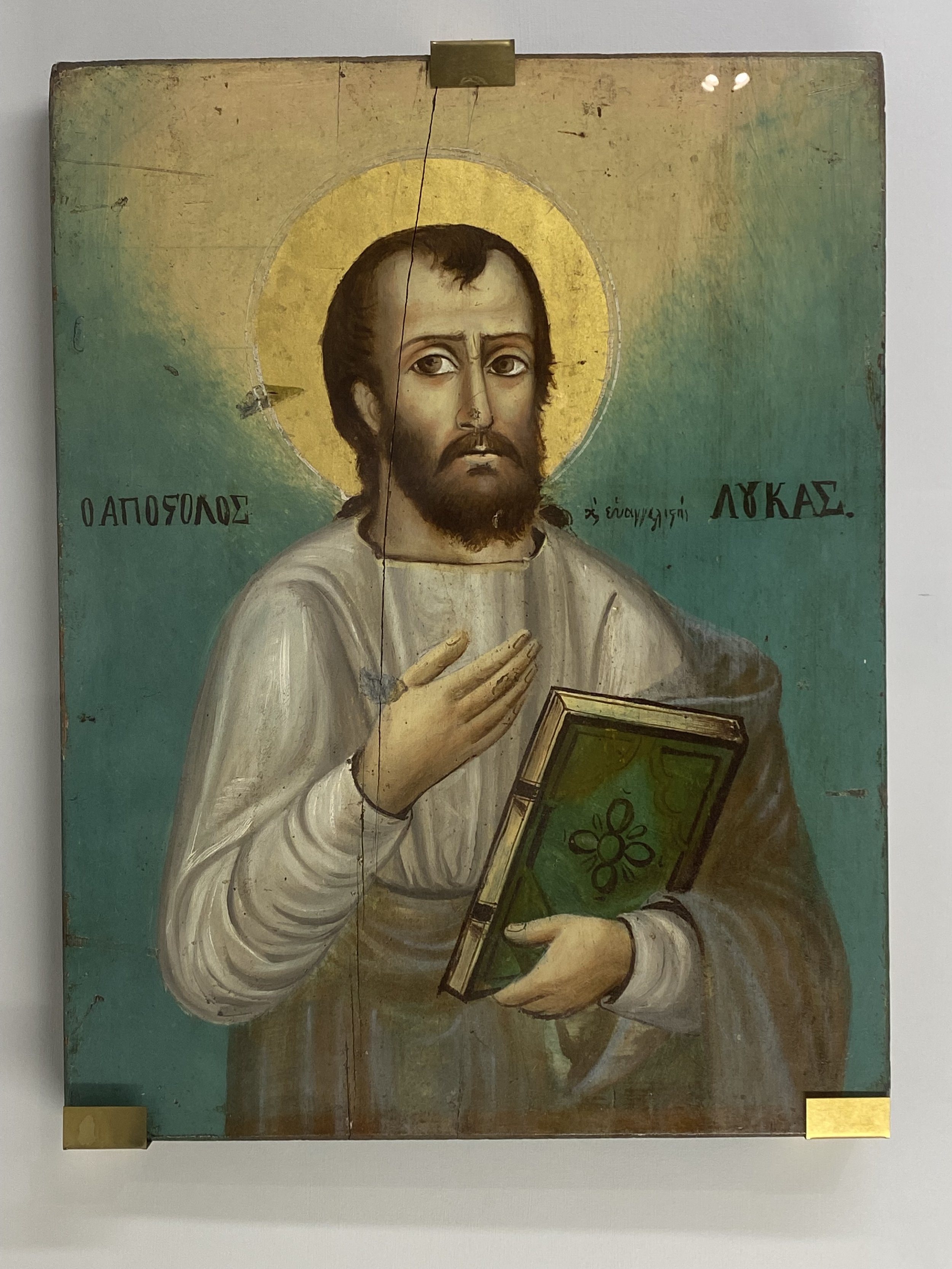
Day 3
Yalvac/Pisidian Antioch (Acts 13:14-51; Acts 14:19; Acts 14:21-23; 2Timothy 3:11)
We left Konya early in the morning and drove two hours through more rugged terrain to Yalvac, the Turkish Lakes region, and its ancient capital, Pisidian Antioch. The name of the city can often generate confusion. In the third century B.C., there were more than a dozen cities named after Seleucid ruler Antiochus. Two of the Antiochs are featured prominently in Acts.
Antioch on the Orontes, also called Antioch in Syria, is in the southern tip of what is now Turkey, on the border with Syria. A key center for early Christianity, apostles Peter and Paul and other important church leaders ministered there. The Book of Acts says this Antioch is where converts to Jesus’ message were first called Christians.
Our tour of St. Paul’s footsteps once may have included a stop in this Antioch, now known as Antakya. Tragically, more than 50% of the modern city was destroyed in February’s devastating earthquake. More than 10,000 people there were killed. Humanitarian efforts are still ongoing.
Pisidian Antioch is farther west in Turkey. Paul and Barnabas visited here during their first missionary journey. Acts 13:16-41 records Paul’s first and longest sermon, which he preached at the synagogue in Pisidian Antioch. The sermon provoked great debate among local Jews, and as a result, Paul and Barnabas were eventually expelled.
Our visit here began at the Yalvac Archeological Museum, which features inscriptions and other artifacts from Pisidian Antioch. The museum also has a “St. Paul Room” with a large model of what the city would have looked like during Paul’s visits.
We then drove a short distance to the extensive ruins of the ancient city. We were met by a prominent local archeology professor who gave us a tour of the important sites, including a city gate, theater, marketplace and the remains of a huge temple to the Roman emperor Caesar Augustus. The temple is on the highest point of the city, with a gorgeous view of the surrounding plain and snow-covered mountains in the background.
Finally, we walked to the ruins of a fourth century Christian basilica. Archeologists found Jewish artifacts at the site, indicating that the basilica was likely built on top of an older synagogue. Therefore, Arslan said, scholars presume this is the place where Paul gave his famous sermon. We sat on benches inside the ruins as Arslan read Acts chapter 13 aloud.
Isparta/Lake Egirdir
After the tour of Pisidian Antioch, we drove to the picturesque lake town of Egirdir. While not mentioned in the New Testament, the lake is a major feature of the region, and locals say Paul and his companions would have walked by the lake many times traveling between Pisidian Antioch and the important city of Perga.
We ate lunch at a charming lakeside restaurant, where the special was fried lake perch with fresh herbs. I finished my meal with more Turkish tea. Egirdir’s mayor came to greet us and to give us fresh and dried apples, one of the key products of the region.
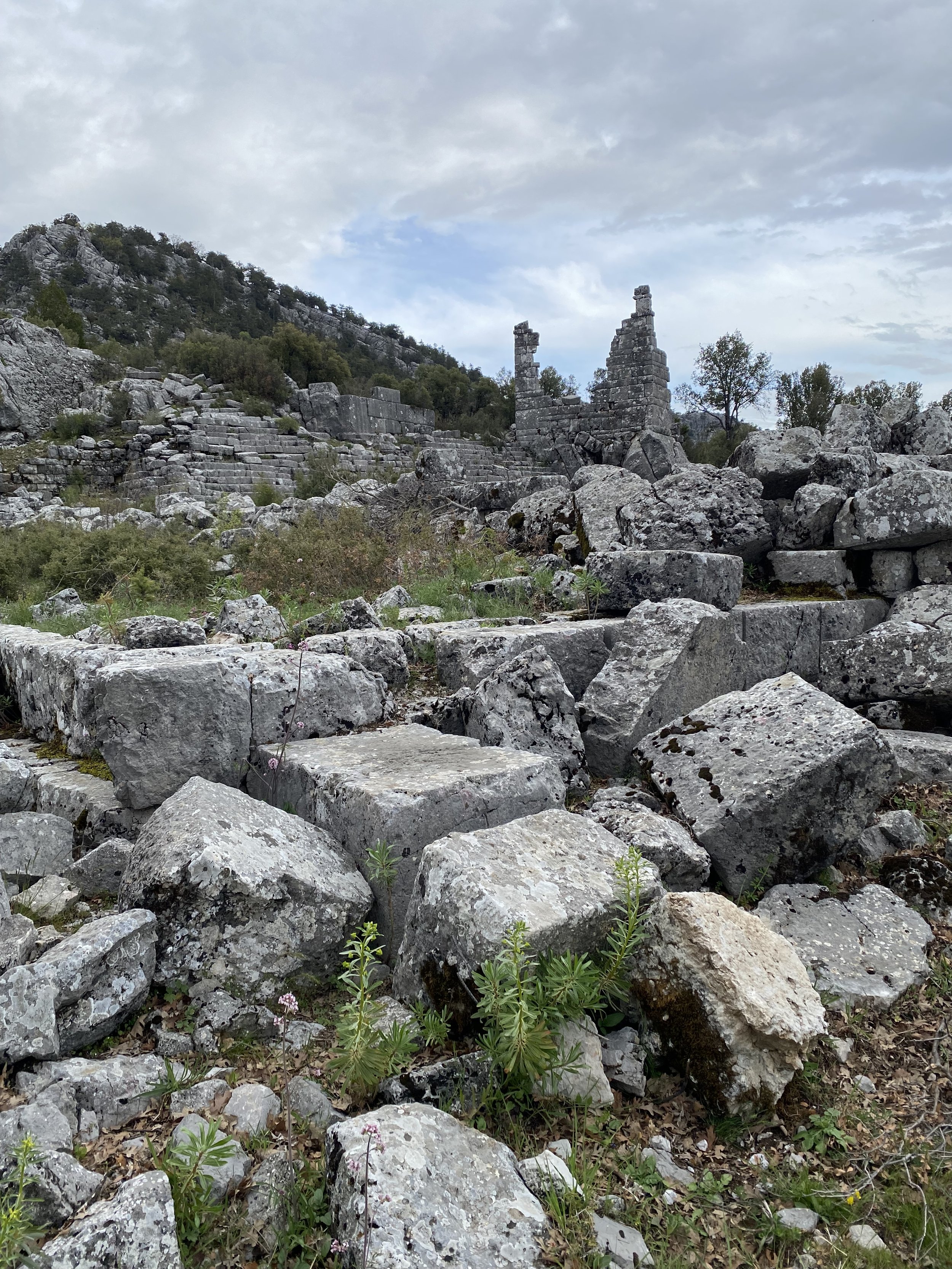
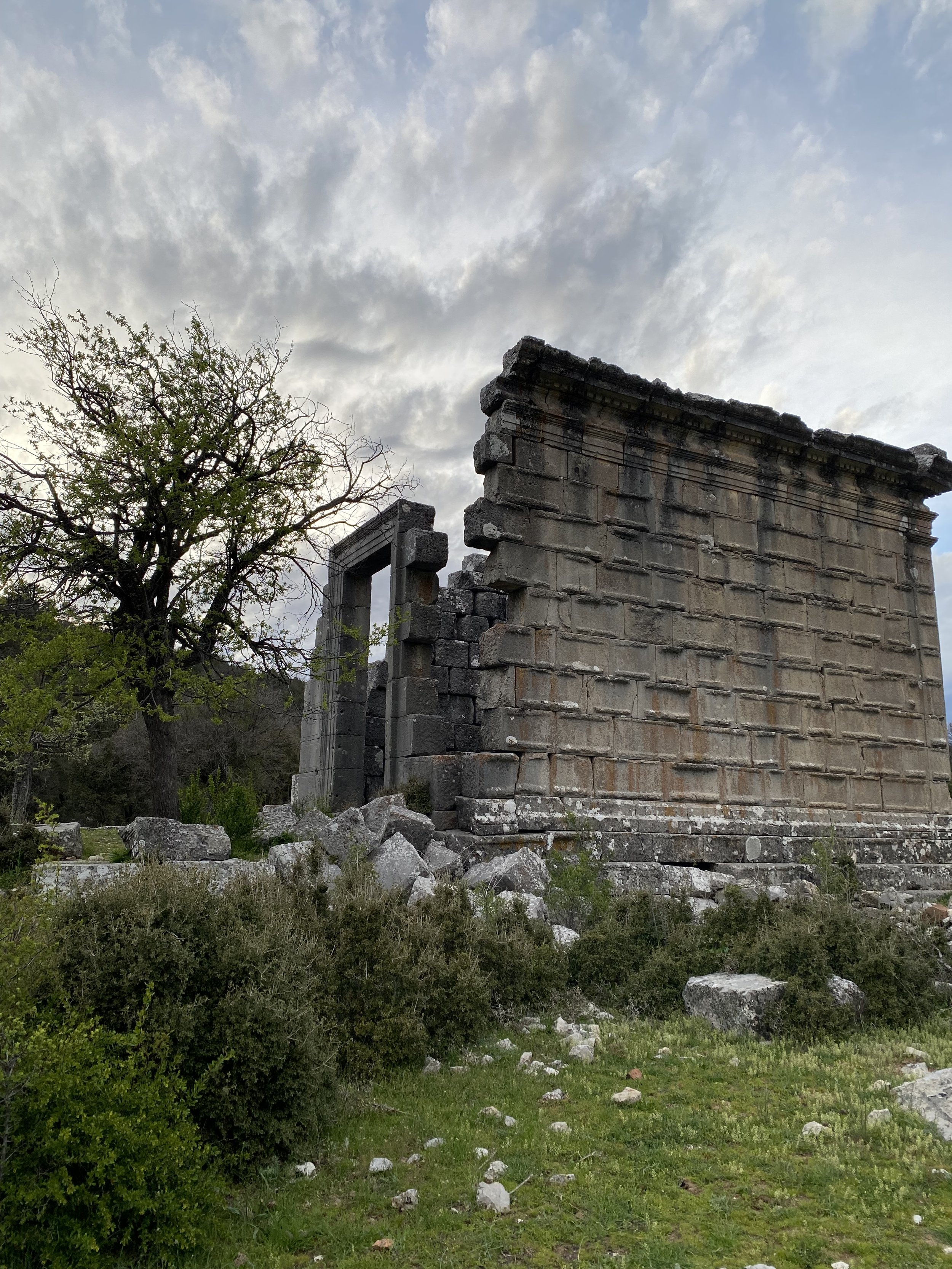
Adada
After lunch, we drove on the winding mountainous route near the old Roman road to the ruins of Adada. The ancient city is also not mentioned in the New Testament, but scholars once again believe Paul would have passed through in his travels.
Archeologists have just completed a survey of the site in 2021 and hope to soon begin extensive excavations. The site covers a wide area and includes ruins of a theater, a stadium, a marketplace and several massive temples to Roman emperors and gods. As we walked around the rubble in the dusk, a wild horse wandered by. We followed the treacherous winding road in the dark to our hotel in town of Isparta, where local leaders had left us gifts of rose and lavender soaps.
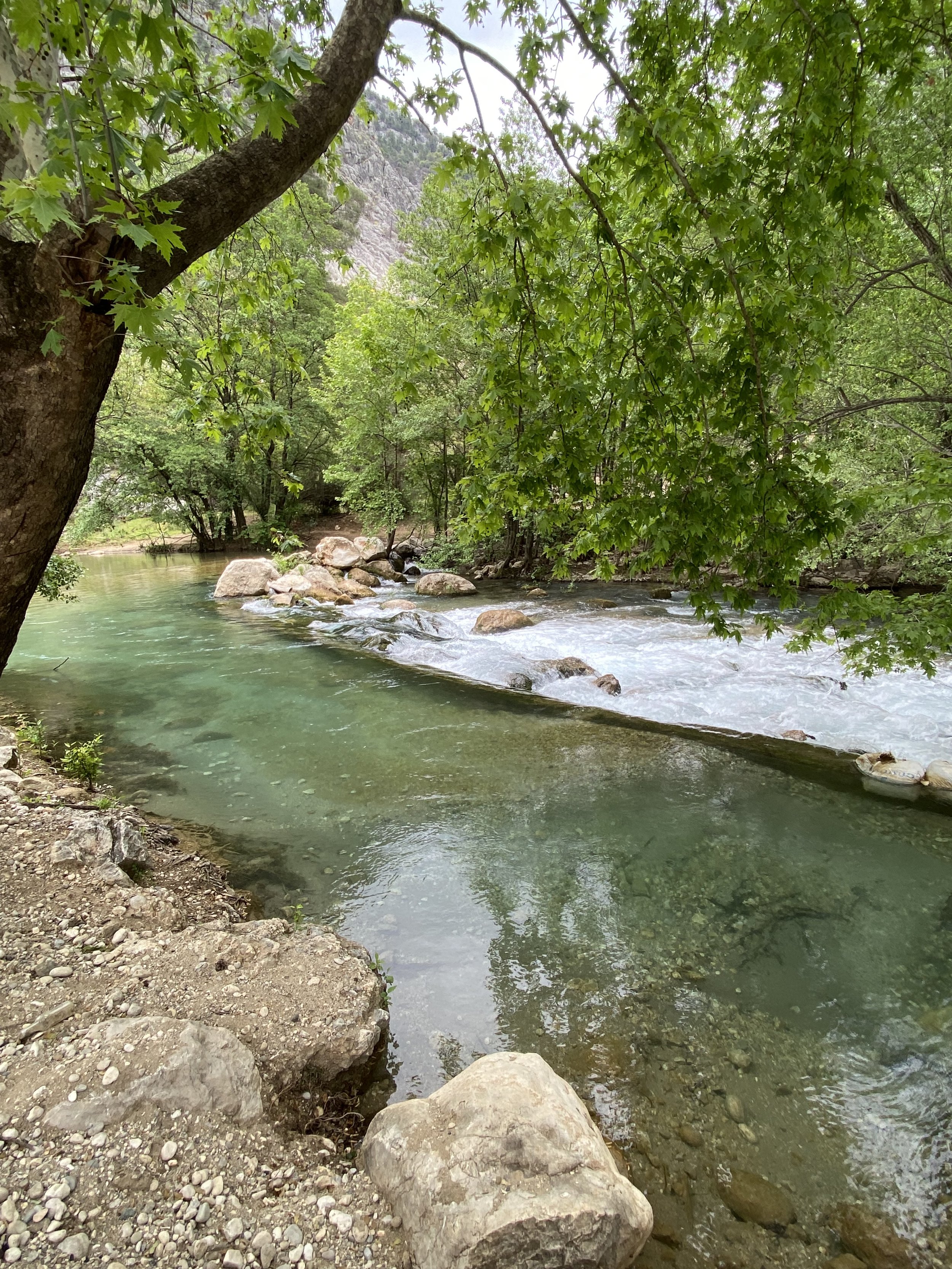

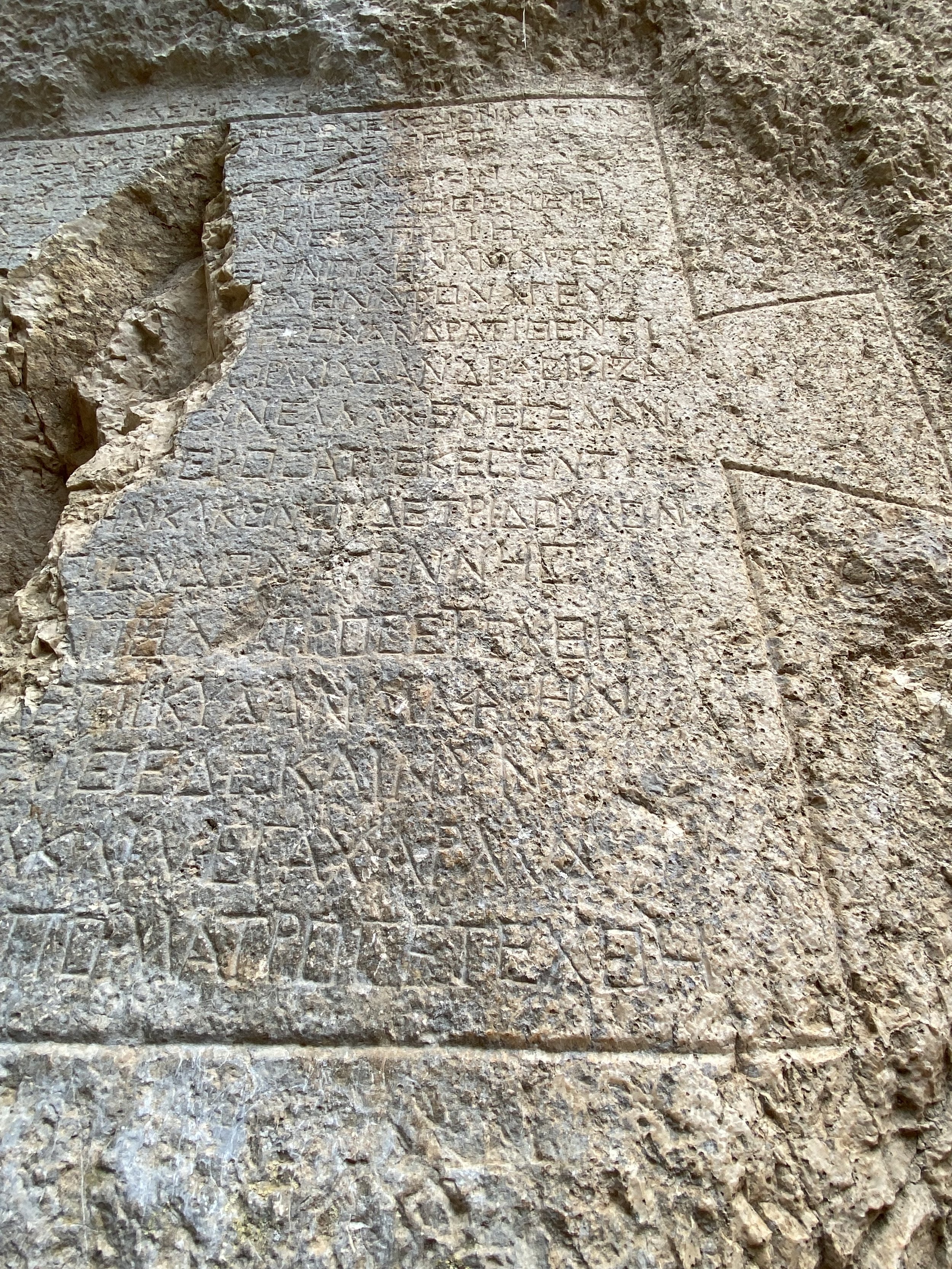
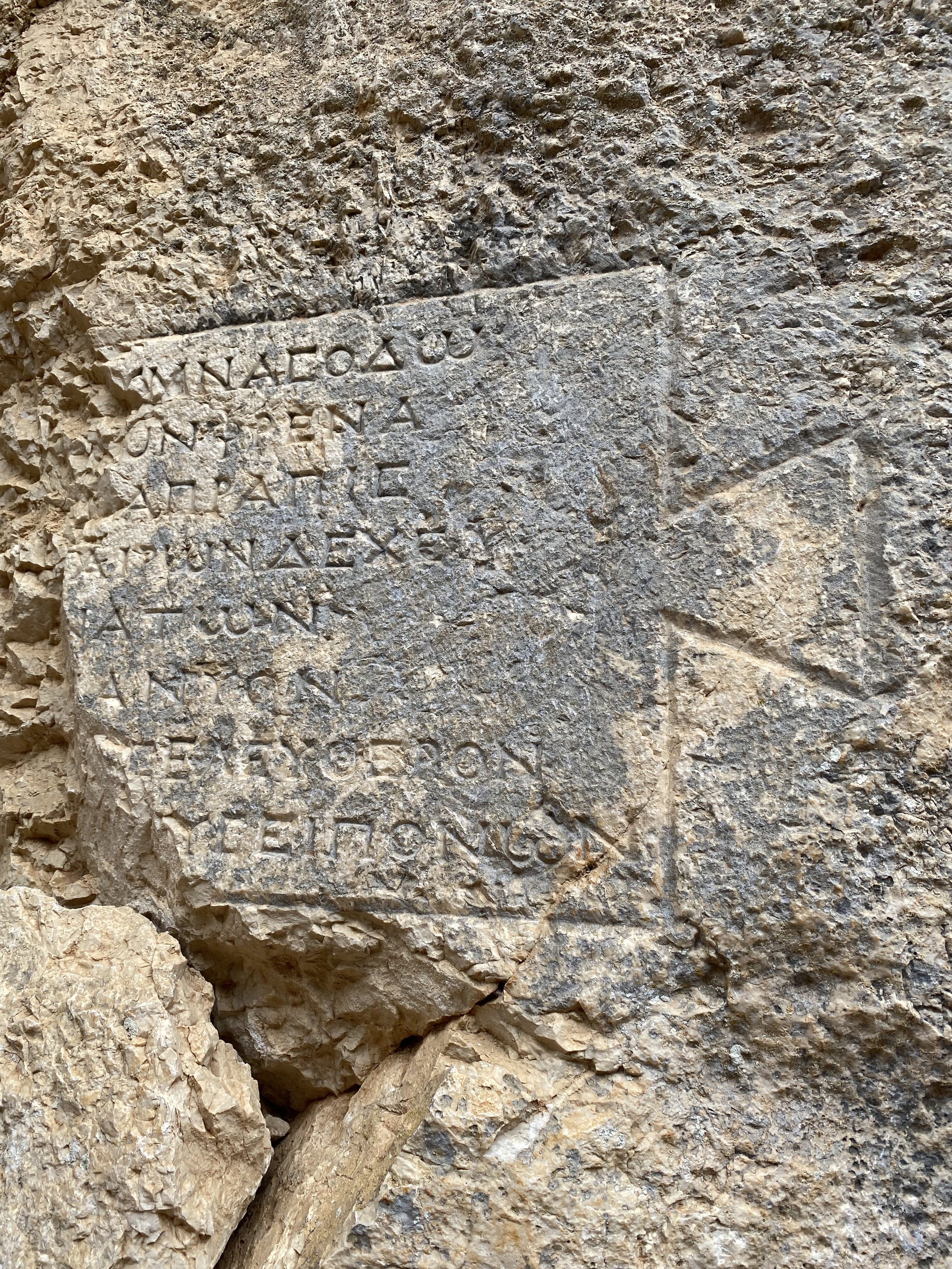
Day 4
Yazli Canyon
Another early start brought us to the Yazli Canyon Nature Park, about 50 miles south of Isparta. For about two hours, we hiked on a lovely gorge path along a pristine river. This was an ancient shortcut on the Roman road between Pisidian Antioch and Perga. And indeed, first-century Greek-speaking travelers left inscriptions still visible in the rocks. Scholars say Paul and his companions could well have taken this shortcut on their travels in the area.
There are shaded picnic tables along the river, and after our hike, we sat and snacked on our Egirdir apples before getting back into the minibus and driving in relative comfort to the ancient ruins of Perga.
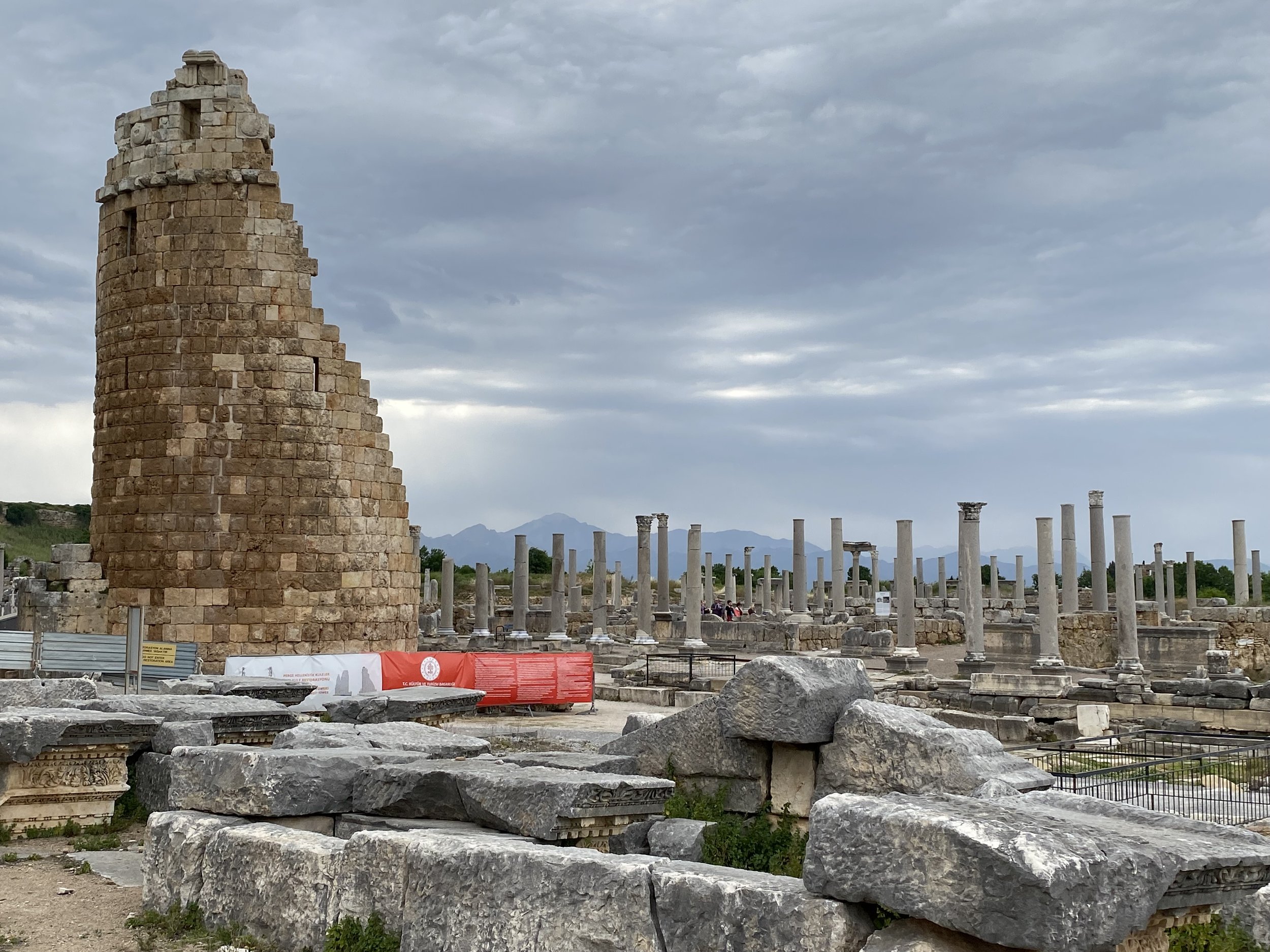
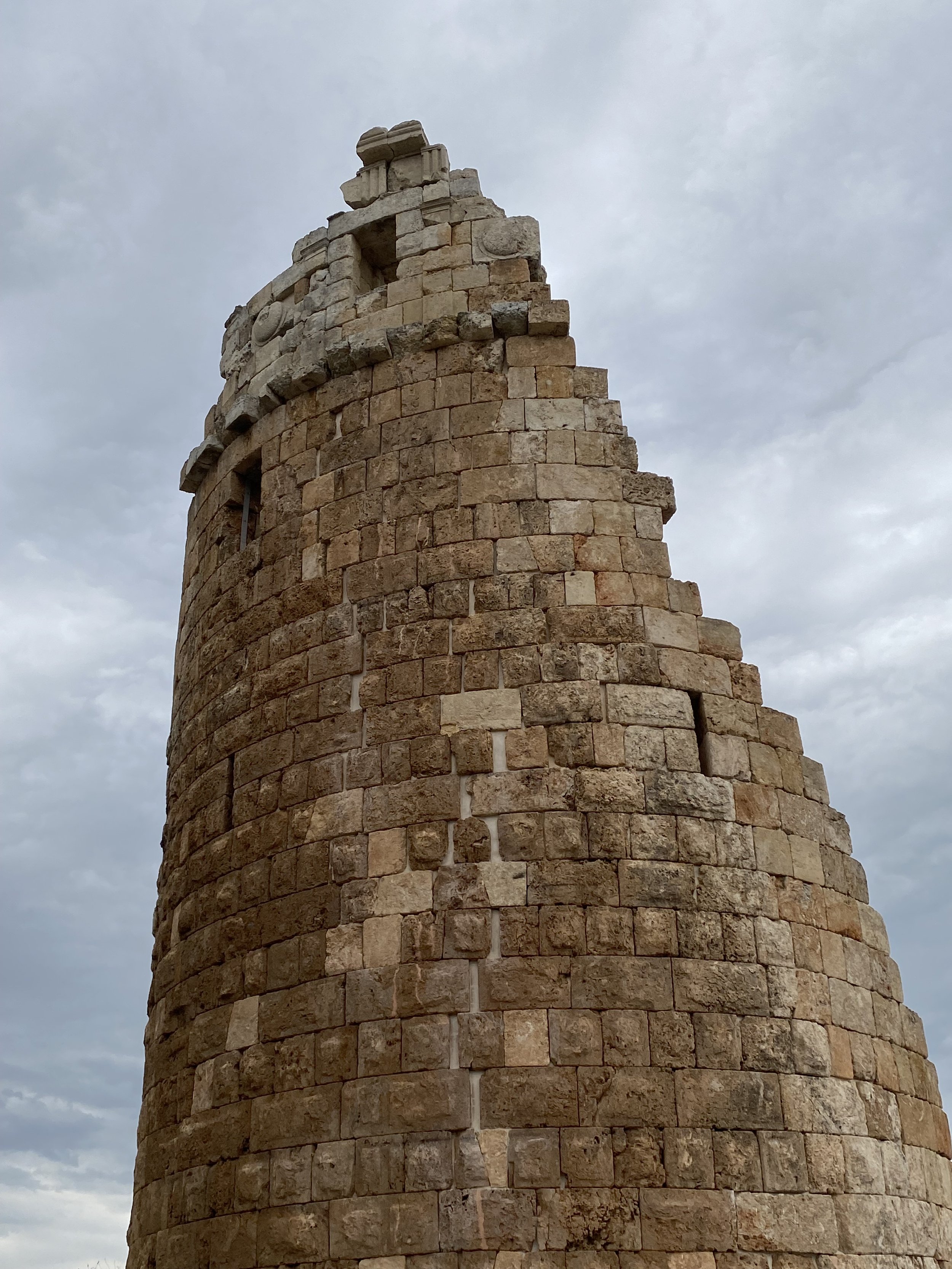
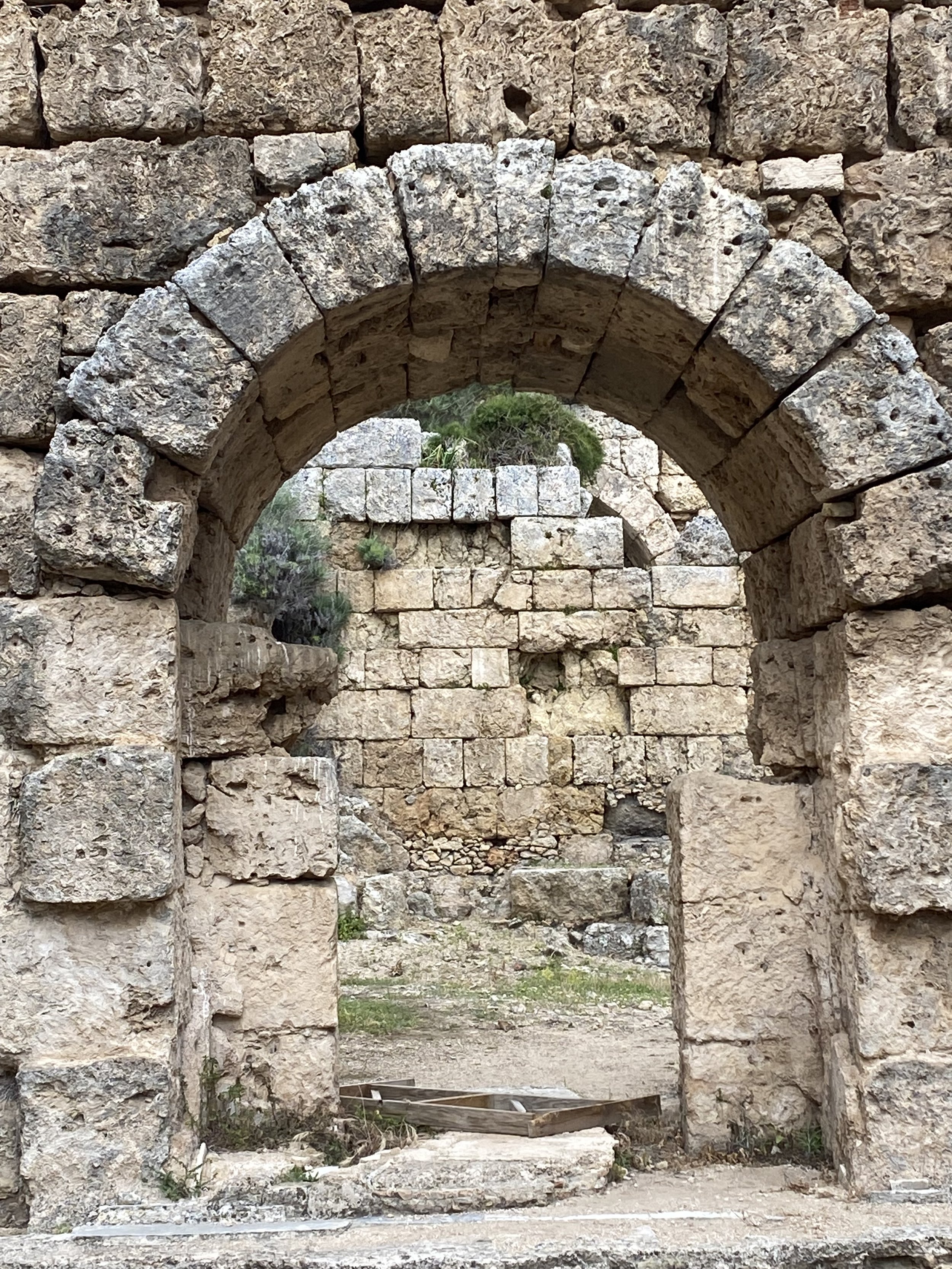
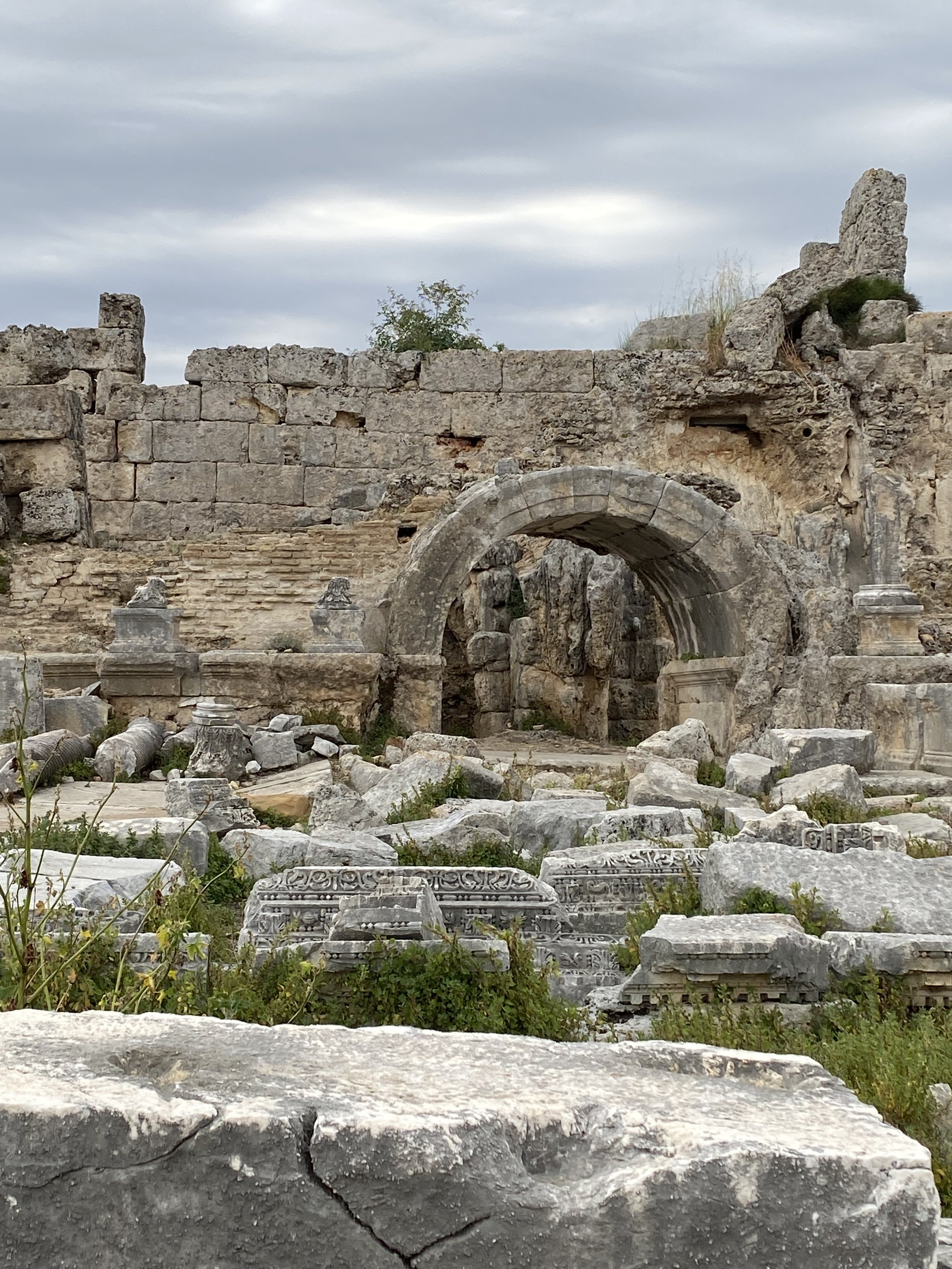

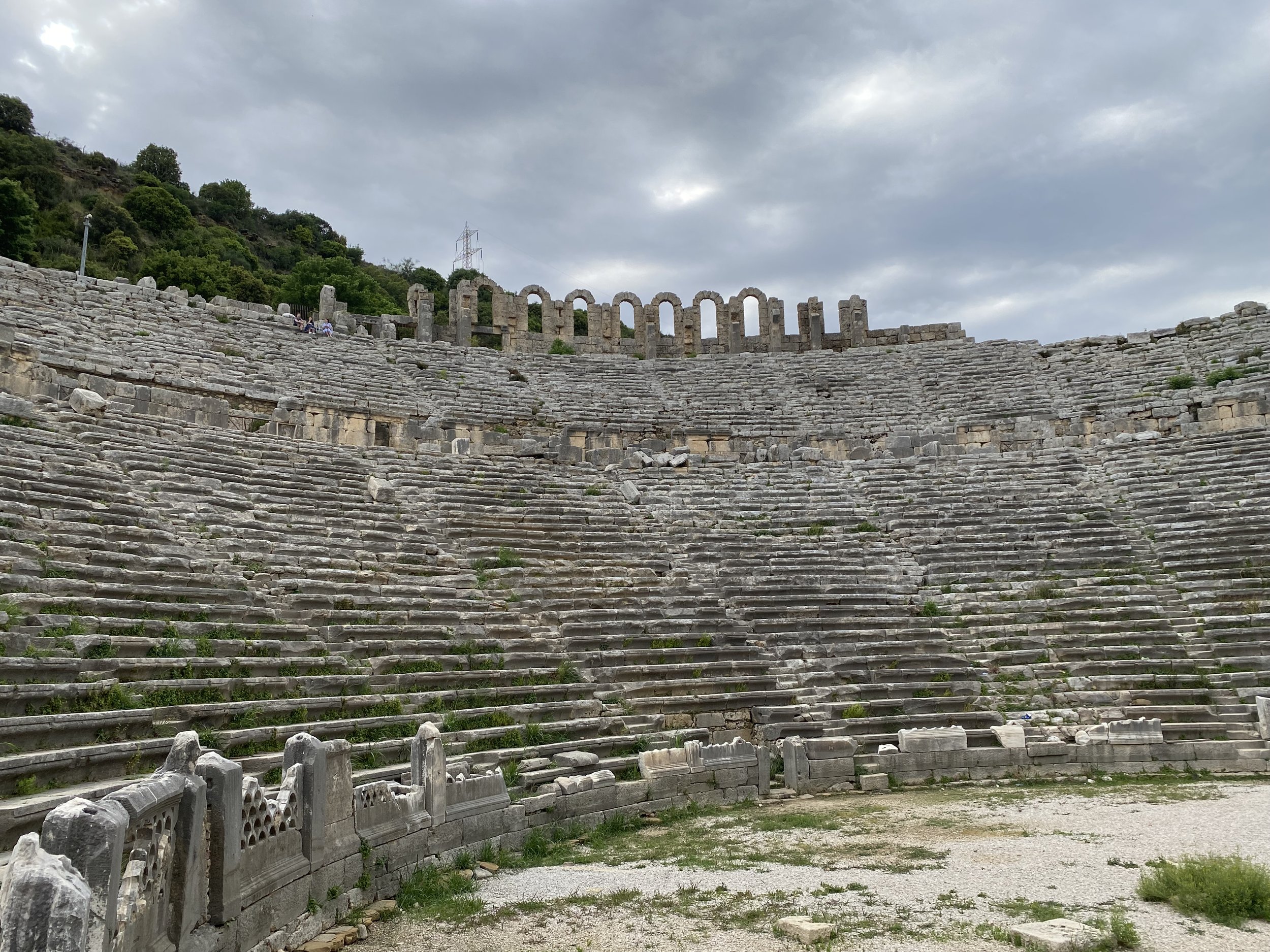
Perga (Acts 13:13-14; 14:25)
According to the New Testament, Perga was Paul’s entry point into Asia Minor during his first missionary journey. The city is also mentioned as the place where the young missionary John Mark parted ways with Paul and Barnabas.
The extensive ruins here include the massive remains of a Hellenistic city gate that Paul and Barnabas would have passed through as they entered the city. The site includes a large bath complex with hot, warm and cold rooms, a colonnaded marketplace and a huge fountain that flowed down the middle of the main street. Along the stone roads, you can still see the ruts made by Roman chariots. Outside the city walls, there is a 14,000-seat theater and a massive stadium where gladiator fights would have taken place.
The modern harbor of Antalya, part of the Turkish Riviera. Paul sailed from Attalia at the end of his first missionary journey.
Attalia/Antalya (Acts 14:25-26)
We ended our tour about 10 miles away in the modern Mediterranean city of Antalya. During the New Testament period, the city was known as Attalia. Paul and Barnabas sailed from Attalia to Antioch in Syria at the end of their first missionary journey.
There are few Greco-Roman era ruins still visible here, although some sections of city walls have been preserved. Although we didn’t visit it during this trip, the Antalya Archeological Museum has many noted artifacts, including a small display about St. Nicholas, the fourth century Christian bishop who lived and worked in what is now Turkey.
READ: In Search Of The Real St. Nicholas’ Deep Roots In Turkey (religionunplugged.com)
Today, Antalya is considered part of the Turkish Riviera. It features many beach resorts, trendy restaurants and popular nightlife spots. As the sun began to set, we walked down to the lovely modern harbor and watched the boats before doing some last-minute souvenir shopping. Early the next morning, we flew from Antalya to Istanbul and then on to the United States.
According to Turkish tourism officials, more than 51 million tourists visited Turkey in 2022, a number close to prepandemic levels. Earlier this year, Turkey’s Minister of Culture and Tourism, Mehmet Nuri Ersoy, announced a plan to expand those numbers. He said that faith would be one of the country’s specific focus areas for tourism promotion in 2023.
Many American Christian tourists have not put Turkey on their lists. Adam English, professor of theology and philosophy at Campbell University in North Carolina, said Turkish tourism officials face several possible challenges, including overcoming some Christians’ concerns about traveling to a predominantly Muslim country in a politically volatile region of the world. Another challenge is countering ignorance about Turkey’s rich Christian heritage.
Yet, English asserted that for many Christian tourists, coming to Turkey and visiting places mentioned in the Bible can have deep spiritual meaning. “To me, it really brings those stories to life,” English told me. “When you can actually see the locations and the relationship of places to each other, you can really start to visualize these stories and how they may have happened.”
Editor’s Note: This is third in a series of articles exploring ancient Christian sites in modern Turkey.
Kim Lawton is president of Kim Lawton Media, a video production and media consulting company near Washington, D.C. She is the former managing editor of the highly-acclaimed PBS series “Religion & Ethics NewsWeekly.” She traveled to Turkey on a trip sponsored by the Turkey Tourism Promotion and Development Agency.




